| Operator | CSA / NASA |
|---|---|
| COSPAR ID | 1969-009A |
| SATCAT no. | 03669 |
| Spacecraft properties | |
| Manufacturer | RCA Victor |
| Launch mass | 241.0 kilograms (531.3 lb) |
| Start of mission | |
| Launch date | 30 January 1969, 06:43:00 UTC |
| Rocket | Delta E1 485/D65 |
| Launch site | Vandenberg SLC-2E |
| Orbital parameters | |
| Reference system | Geocentric |
| Regime | LEO |
| Eccentricity | 0.017475 |
| Perigee altitude | 578 kilometres (359 mi) |
| Apogee altitude | 3,526 kilometres (2,191 mi) |
| Inclination | 82.42º |
| Period | 128.42 minutes |
| Operator | CSA / NASA |
|---|---|
| COSPAR ID | 1971-024A |
| SATCAT no. | 05104 |
| Spacecraft properties | |
| Manufacturer | RCA Victor |
| Launch mass | 264.0 kilograms (582.0 lb) |
| Start of mission | |
| Launch date | 01 April 1971, 02:53:00 UTC |
| Rocket | Delta E1 |
| Launch site | Vandenberg SLC-2E |
| Orbital parameters | |
| Reference system | Geocentric |
| Regime | LEO |
| Eccentricity | 0.0045 |
| Perigee altitude | 1,358 kilometres (844 mi) |
| Apogee altitude | 1,458 kilometres (906 mi) |
| Inclination | 88.1º |
| Period | 113.6 minutes |
ISIS 1 and 2 ("International Satellites for Ionospheric Studies") were the third and fourth in a series of Canadian satellites launched to study the ionosphere over one complete solar cycle. After the success of Canada's Alouette 1, Canada and the United States jointly sent up three more satellites in the ISIS program. The first was named Alouette 2 (after originally being named ISIS-X). As was the case for the Alouette satellites, RCA Ltd. of Montreal was the prime contractor for both ISIS 1 and 2. [1]
A third satellite, ISIS 3, was scheduled for construction, but when the government's focus shifted towards communications satellites, it was cancelled in 1969. The funds were instead used to produce the Communications Technology Satellite (also known as Hermes), which was launched in 1976. [2]
ISIS 1 (1969-009A) was launched at 6h43 UTC [3] on January 30, 1969, by a Delta rocket at the Western test range at Vandenberg AFB in California. [4]
Unlike the Alouette satellites, the ISIS had complex navigational equipment and a tape recorder to record some experiments when they were out of communications range and play back the results when the satellites came over Canada again. [1] Some other experiments were not recorded but data was sent in over several stations around the globe. In total it conducted 10 experiments.
ISIS 2 (1971-024A) was launched at 2h53 UTC [5] on April 1, 1971, on a Delta rocket also from the Western test range at Vandenberg AFB in California. [6] Due to budget constraints, the design of ISIS 2 was largely similar to that of ISIS I. The main difference was the addition of two experiments designed to study atmospheric optical emissions, including a photometer. This allowed images to be taken for the first time of an Aurora Borealis as seen from above. [7] James Gosling wrote some of the software to analyze data from ISIS 2, as a high school student working for the University of Calgary physics department. [7] [8]
On March 13, 1984, both ISIS 1 and ISIS 2 were loaned to Japan's Communications Research Laboratory, which continued to operate the satellites until 1990, when they were shut down due to deterioration of battery capacity. [9]

The Explorers program is a NASA exploration program that provides flight opportunities for physics, geophysics, heliophysics, and astrophysics investigations from space. Launched in 1958, Explorer 1 was the first spacecraft of the United States to achieve orbit. Over 90 space missions have been launched since. Starting with Explorer 6, it has been operated by NASA, with regular collaboration with a variety of other institutions, including many international partners.
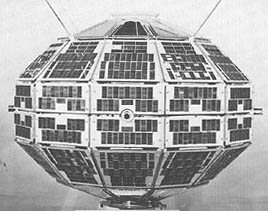
Alouette 1 is a deactivated Canadian satellite that studied the ionosphere. Launched in 1962, it was Canada's first satellite, and the first satellite constructed by a country other than the Soviet Union or the United States. Canada was the fourth country to operate a satellite, as the British Ariel 1, constructed in the United States by NASA, preceded Alouette 1 by five months. The name "Alouette" came from the French for "skylark" and the French-Canadian folk song of the same name.
Alouette 2 was a Canadian research satellite launched at 04:48 UTC on November 29, 1965, by a Thor Agena rocket with Explorer 31 from the Western test range at Vandenberg AFB in California. It was designed to explore the ionosphere.
The NASA Space Science Data Coordinated Archive (NSSDCA) serves as the permanent archive for NASA space science mission data. "Space science" includes astronomy and astrophysics, solar and space plasma physics, and planetary and lunar science. As the permanent archive, NSSDCA teams with NASA's discipline-specific space science "active archives" which provide access to data to researchers and, in some cases, to the general public. NSSDCA also serves as NASA's permanent archive for space physics mission data. It provides access to several geophysical models and to data from some non-NASA mission data. NSSDCA was called the National Space Science Data Center (NSSDC) prior to March 2015.
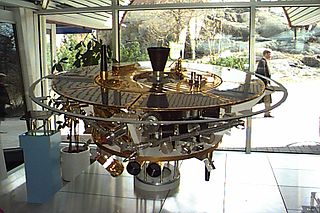
FREJA was a Swedish satellite developed by the Swedish Space Corporation on behalf of the Swedish National Space Board. It was piggyback launched on a Long March 2C launch vehicle from Jiuquan Satellite Launch Center in China on October 6, 1992. The satellite's total cost was 19 million U.S. dollars, excluding the costs of experiments.

AEROS satellites were to study the aeronomy i. e. the science of the upper atmosphere and ionosphere, in particular the F region under the strong influence of solar extreme ultraviolet radiation. To this end the spectrum of this radiation was recorded aboard by one instrument on the one hand and a set of 4 other instruments measuring the most important neutral uand iononized parameters at the satellite's position on the other.
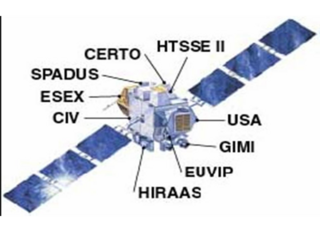
The Advanced Research and Global Observation Satellite (ARGOS) was launched on 23 February 1999 carrying nine payloads for research and development missions by nine separate researchers. The mission terminated on 31 July 2003.
Lewis was an American satellite which was to have been operated by NASA as part of the Small Satellite Technology Initiative. It carried two experimental Earth imaging instruments, and an ultraviolet astronomy payload. Due to a design flaw it failed within three days of reaching orbit, before it became operational.
Discoverer 20, also known as KH-5 9014A, was a USAF photographic reconnaissance satellite under the supervision of the National Reconnaissance Office (NRO) which was launched in 1961. Discoverer 20 was the first KH-5 ARGON satellite to be launched.
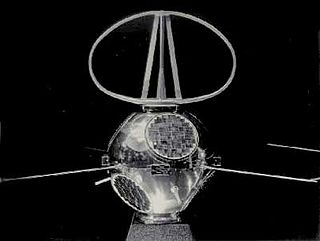
LOFTI-1 was an American satellite which was launched in 1961 and operated by the United States Navy and Naval Research Laboratory. It was used to conduct research into the propagation of very low frequency radio signals in the ionosphere, and to investigate if these signals could be received by submarines. A 136.17 MHz transmitter was used for this investigation.
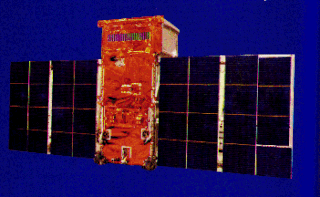
TD-1A, or Thor-Delta 1A, was a European astrophysical research satellite which was launched in 1972. Operated by the European Space Research Organisation, TD-1A made astronomical surveys primarily in the ultraviolet, but also using x-ray and gamma ray detectors.

ESRO-2B or Iris or sometimes ESRO II, was a European astrophysical spin-stabilised research satellite which was launched in 1968. Operated by the European Space Research Organisation, ESRO 2B made astronomical surveys primarily in x-ray and solar particles detectors.

INTASAT was the first satellite of Spain. It was designed by Spain's National Institute of Aerospace Technology (INTA).
Tempsat-1 was a United States Navy Radar calibration object, launched from Vandenberg Air Force Base on a Thor Ablestar on August 13, 1965. It was a 14 inches (36 cm), unguided sphere. It was mainly used in investigation of spacecraft technology and orbits.
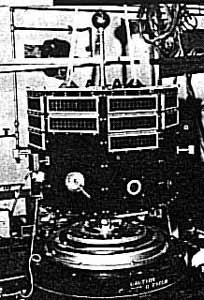
Explorer 31, also called DME-A, was a NASA satellite launched as part of the Explorer program. Explorer 31 was launched on 29 November 1965 from Vandenberg Air Force Base, California, with a Thor-Agena launch vehicle. Explorer 31 was released along with the Canadian satellite Alouette 2.
CAMEO was a piggy-back experiment included in the Nimbus-G launch by the Goddard Space Flight Center. The primary objective of the investigation was to study the magnetosphere-ionosphere interactions by observing the dynamics of neutral (barium) and ion (lithium) clouds released at orbital velocities near the earth. It had a mass of approximately 89 kg and consisted basically of batteries, of one lithium and four barium gas canisters. The CAMEO unit remained attached to the second stage of the Delta vehicle. This was the first opportunity to observe the behavior of conventional barium release when conducted at orbital velocity in the near-earth magnetic field.
USA-198, known before launch as NRO Launch 24 (NROL-24), is an American communications satellite that was launched in 2007.

RADCAL was a radar calibration satellite launched and operated by the United States Air Force. It was active from June 1993 until it stopped communicating in May 2013.